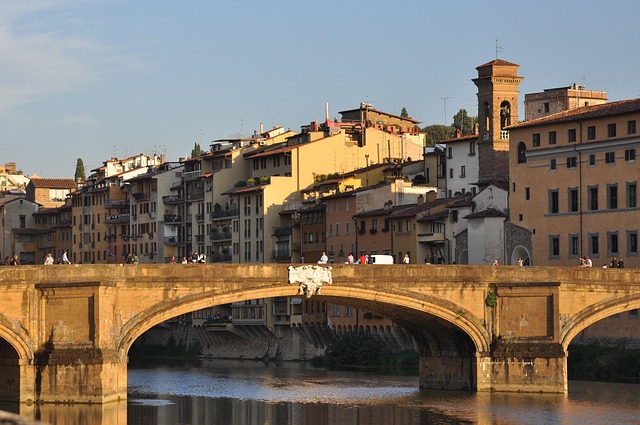Florence's unique identity is forged by its strategic location on the Siuslaw River, which fueled centuries of maritime trade and economic growth. The city's founding and subsequent development are deeply intertwined with indigenous navigation, logging, and vibrant cultural evolution. Historical landmarks along the river showcase Florence's rich history as a bustling port and logging hub, blending maritime heritage with architectural marvels. Today, visitors can explore these remnants, experience local festivals celebrating logging traditions, and appreciate the city's harmonious fusion of past and present cultural influences.
Florence, nestled along the picturesque Siuslaw River, boasts a rich tapestry of history and culture woven into its very fabric. From its humble beginnings as a settlement to its rise as a thriving city, Florence’s founding history is a story of resilience and innovation. The river, a vital lifeline, played a pivotal role in its maritime heritage, facilitating trade and shaping the community. As the logging industry boomed in the 20th century, Florence experienced significant growth. Today, it celebrates its cultural milestones and showcases its historical landmarks, offering visitors a unique glimpse into its past.
- Florence's Founding History: From Settlement to City
- Maritime Heritage: The Siuslaw River and Florence's Sea Trade
- Logging Days: Industry and Growth in the Early 20th Century
- Cultural Milestones: Celebrating Art, Music, and Community
- Historical Landmarks: Exploring Florence's Past Through Architecture
Florence's Founding History: From Settlement to City

Florence’s story begins with its founding along the banks of the Siuslaw River, a pivotal location that shaped its future as a bustling hub. The area’s rich maritime history dates back centuries, with indigenous peoples navigating these waters and establishing settlements, later becoming an integral part of Oregon’s coastal landscape. Over time, Florence evolved from a modest settlement to a thriving city, driven by various economic forces.
The logging industry played a significant role in the town’s growth, attracting workers and fueling development. As the 19th century progressed, Florence’s cultural evolution was evident through its architecture and the construction of iconic historical landmarks. These milestones not only reflect the city’s past but also serve as a testament to its resilience and transformation into a unique destination that seamlessly blends its maritime roots with a rich cultural tapestry.
Maritime Heritage: The Siuslaw River and Florence's Sea Trade

Florence’s rich maritime heritage is deeply rooted in its founding history and the strategic importance of the Siuslaw River. The river has long served as a vital transportation route, facilitating trade and commerce between Florence and the Pacific Ocean. This sea trade played a pivotal role in the city’s early economic growth, especially during the logging industry’s peak. The abundance of timber resources along the river attracted settlers and contributed to Florence’s cultural evolution, shaping its unique identity.
The Siuslaw River also stands as a testament to Florence’s historical landmarks, with many sites reflecting its maritime past. These include historic ships, wharves, and bridges that have stood the test of time, narrating stories of bustling trade and the city’s resilience. Today, these landmarks offer visitors a glimpse into Florence’s maritime history, showcasing how the river has shaped not just its economy but also its cultural tapestry.
Logging Days: Industry and Growth in the Early 20th Century

In the early 20th century, Florence began to experience significant growth, largely driven by its logging industry and maritime history. The Siuslaw River, a key element in Florence’s founding history, played a crucial role in facilitating trade and transporting timber from the dense forests surrounding the city. This period marked a pivotal point in Florence’s cultural evolution, as the influx of industry led to the establishment of several historical landmarks that still stand today.
The logging days were a time when Florence’s maritime heritage truly shone. The city became a bustling hub for lumberjack communities, with sawmills and shipyards dotting the riverfront. This industrial boom left an indelible mark on the city’s landscape, shaping its architecture and contributing to its rich cultural tapestry. As Florence continued to evolve, these historical landmarks not only served as testaments to the city’s past but also became integral parts of its identity, attracting visitors interested in exploring Florence’s unique maritime and logging history intertwined with its vibrant cultural scene.
Cultural Milestones: Celebrating Art, Music, and Community

Florence’s rich history is woven into the fabric of its cultural milestones, where art, music, and community intertwine to create a vibrant tapestry. Since its founding, the city has celebrated its maritime heritage with events that pay homage to its role as a bustling port on the Siuslaw River, reflecting its significance in shaping the region’s economy and culture. The logging industry also left its mark, influencing Florence’s growth and fostering a community spirit seen in many of its festivals.
Through the years, Florence has evolved culturally, becoming a canvas for artistic expressions and musical performances that highlight its historical landmarks. These celebrations not only preserve the city’s past but also celebrate the diversity and creativity that have shaped its present. The interplay between Florence’s founding history, maritime legacy, logging industry contributions, and continuous cultural evolution makes it a unique destination where art, music, and community come together to create memorable experiences.
Historical Landmarks: Exploring Florence's Past Through Architecture

Florence’s rich history is intricately woven into its architectural landscape, offering visitors a glimpse into the city’s past. From its founding as a Roman settlement to its rise as a maritime power and logging hub, each era has left an indelible mark on the city’s structure. The Siuslaw River, for instance, has played a significant role in shaping Florence’s identity, both historically and culturally. It served as a vital transportation route, facilitating trade and the exchange of ideas, and its surrounding landscapes have inspired local artists and artisans for centuries.
Exploring Florence means delving into its historical landmarks—each building, bridge, and park tells a story. The city’s architecture reflects its cultural evolution, from the grand medieval structures to the elegant Renaissance designs. These landmarks not only showcase the architectural prowess of the time but also provide a window into Florence’s diverse past, including its logging industry days when towering trees lined the riverbanks and the bustling maritime trade that brought wealth and influence.
